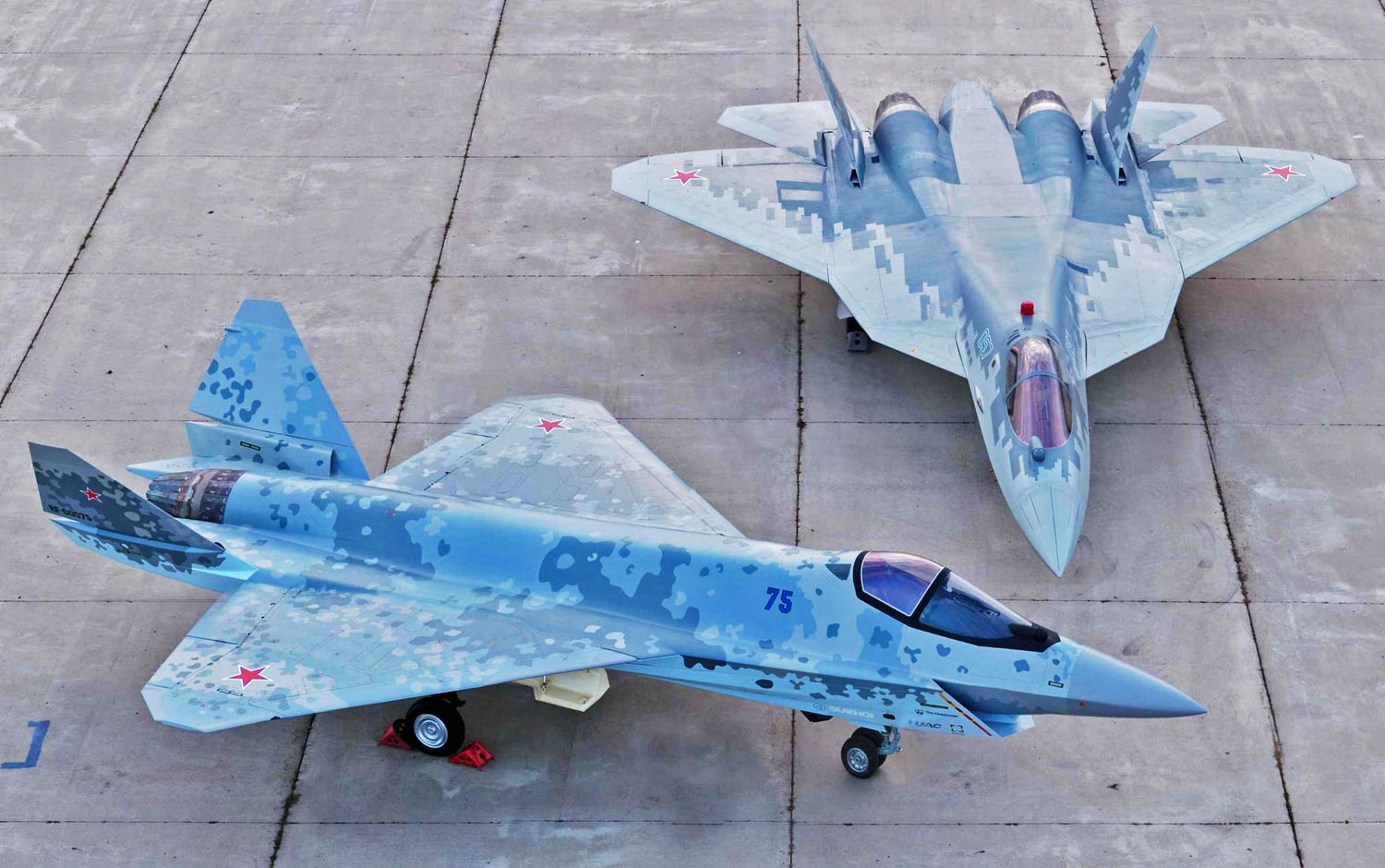Russia’s United Aircraft Corporation (UAC) has patented what appears to be a modular variant of the Su-75 Checkmate single-engine light stealth fighter with an interchangeable cockpit.
Seen As ‘Spy Threat’ By India, China’s Controversial Research Vessel ‘Shi Yan-6’ Returns To Homeport
According to TASS, the patent documents describe the concept aircraft design as a “single-engine tactical aircraft with low radar signature.”
The patented concept logically splits the aircraft into a fuselage base part and a fuselage head part. The fuselage base part serves as the “basic transport platform.” The fuselage head part is specific to the role for which the fighter is configured. Using different replaceable head parts, the aircraft can be configured as a single seat, dual seat, or pilotless stealth fighter.
The head parts can have different aerodynamic designs that retain the stealth characteristics of the fighter.
The patent documents state that the patented universal platform will allow “to radically change the functionality of the entire aviation complex while maintaining the same transport capabilities built into the basic platform.”
Replaceable head parts are attached using units in the transition zone on the base part of the fuselage; there are also connectors and fittings for electrical, hydraulic, and other systems that interact with the mating connectors and fittings of the replaceable part.
Explaining the rationale for the concept, the patent authors state, “Currently, military aircraft perform many tasks. For this purpose, a wide fleet of aircraft of various sizes is used, which requires large material and human costs; when all tasks are performed with one aircraft, the efficiency of its use decreases. To reduce or eliminate costs, it is necessary to ensure in one aircraft the possibility of modification to solve various problems in the conditions of the technical base of operating organizations.”
The Concept Explained
Aerodynamically speaking, the part of the fuselage behind the cockpit supports the flight capabilities of an aircraft. Broadly speaking, the engine(s) in the fuselage provide propulsion, the fuel tanks keep the engines running, the wings and control surfaces provide flight and maneuver capability, the undercarriage provides take-off and landing capability, sensors on the fuselage provide situational awareness and a self-protection suite keeps the aircraft safe from adversary missiles.
In other words, the fuselage base provides the capability required for all mission configurations – multi-role fighter (single seat), drone mothership (dual seat), trainer (dual seat), EW (dual/single seat), and penetrating sensor (pilotless).
The weapons and sensors required change with mission configuration. On stealth fighters, weapons specific to a mission are carried internally in weapon bays. The concept is already modular. Sensors – radar, electro-optical – are carried in the front fuselage.
It is possible to carry power generation, communication, and data-crunching hardware in support of missions such as drone mothership operations in weapon bays.
If the modular fighter is being used purely for reconnaissance, the fuselage head doesn’t need a cockpit. The space saved can be used for fitting additional sensors. Also, the fuselage head could be smaller, reducing weight and increasing endurance.
The concept of a modular fighter is logical – it will reduce costs all around – procurement cost, operating costs, pilot and support personnel training costs. The concept will help reduce inventory by facilitating the use of the same hardware to respond to a much wider spectrum of threats and adversaries.
Is A Modular Fighter Feasible
The big question is – Is the concept technically feasible? And if so, why has it not been implemented so far?
Yes, the concept is technically feasible because of technical advances. Flight control software (FCS) can easily accommodate changes in aerodynamic configurations.
Modern fighter aircraft are aerodynamically unstable. They can only be flown by FCS, not by pilots. The FCS flies the aircraft, the pilot merely guides it.
If FCS can accommodate the external carriage of the 7.2 m long Kinzhal missile weighing 4.3 t on a MiG-31K, it can certainly handle a differently shaped or sized fuselage head.
In the Checkmate concept, each cockpit, or more precisely, the fuselage head design, would come with its own FCS. So the change in capabilities would be nearly seamless.
Why Don’t We Have Modular Fighters Already
Modular fighter design became feasible with the advent of fly-by-wire control systems, wherein pilot inputs were relayed to flight control surfaces on the fuselage not by control rods or hydraulic fluid piping but by electrical wires.
However, the imperative for a modular fighter has arisen only recently to cope with growing diversity in the means of wielding air power. No more are fighter aircraft used to just deliver bombs and missiles.
They are being used for reconnaissance, SEAD (Suppression of Enemy Air Defences), EW (Electronic Warfare), and, more recently, to control stealthy drones that can penetrate highly contested airspace, either to provide targeting information to a mother ship or attack targets based on the targeting information provided by a mothership.
The communication, networking, and data processing hardware required for SEAD, EW, Reconnaissance, and mothership operations differ greatly from the support hardware requirement for conventional multirole operations. A modular fighter design would allow the operator to hone the same aircraft for completely different missions, depending on the operational requirement.

Conclusion
The modular fighter concept patented by the UAC is a landmark development in military aviation. The technology to implement the concept is already in place.
During the recent Dubai Airshow 2023, UAC announced that it is poised to start production for the Checkmate fighter.
It is, therefore, unlikely that the initial variant of the Checkmate would be modular in design. But as I have stated above, the technology to implement it is in place. The UAC could well spring a surprise and wrest the initiative that it earlier lost to the West with its hesitant adoption of fighter stealth.
- Vijainder K Thakur is a retired IAF Jaguar pilot. He is also an author, software architect, entrepreneur, and military analyst. VIEWS PERSONAL
- Follow the author @vkthakur




